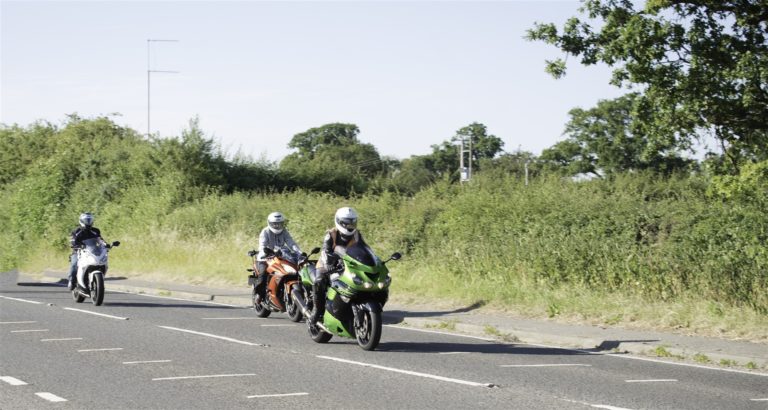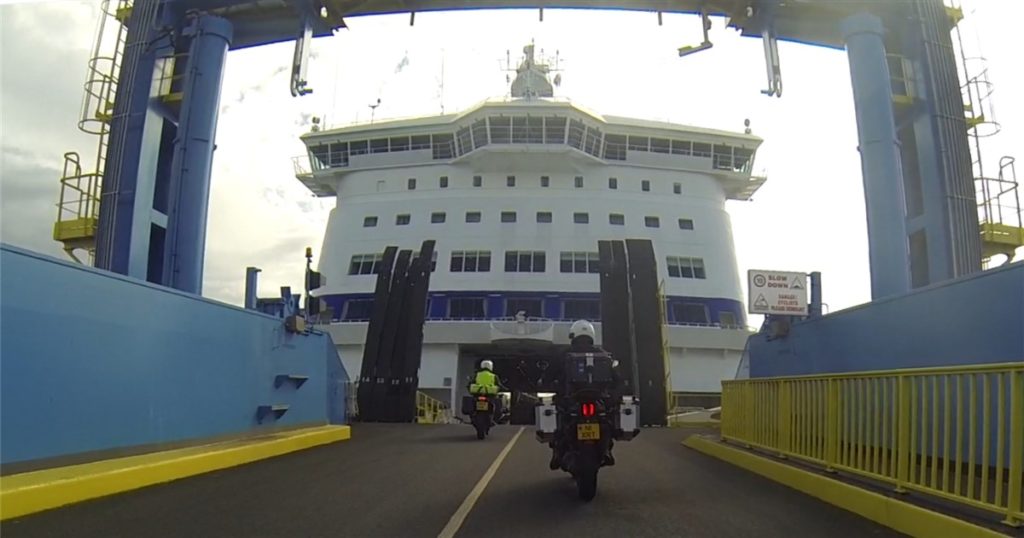

Catching the ferry on a motorcycle
You will have already gone through the planning stage and know the timeframe of the tour you have planned, taking the ferry into consideration is a big factor. You can arrive at one European port and on the return leg depart from a different one. Your route and tour will decide which option you take.
Booking your tickets online is pretty simple, it’s been made easier over the years but firstly, keep an eye out for any reference codes that will give a percentage off the price. Some magazines also promote offers in the advertisements of certain ferry companies.
If you have an unusual request it’s always better to telephone to make a booking so that you get exactly what you require. Group travel is something that is popular and some organisations use a group booking facility known as a ‘Rally’, this is usually 10 bikes or more.
Payment via an internet booking is upfront and immediate, you usually do this for a simple single booking with rider only or with a pillion passenger but a multiple booking with different requirements would need to be done by phone and is also paid for at the time of booking.
But if it’s a bigger trip and classed as a ‘Bike Rally’ payment can be done differently depending on the ferry company’s policy.
On the day of catching the ferry, ensure you arrive in plenty of time so that you don’t miss it. Coming back from Santander for example and missing the ferry could see a long wait for another one or a long ride back through France, depending on your schedule.
It is always better to arrive early and wait around for the ferry and take the opportunity of seeing the town if arriving the day before.
Staying overnight the day before the ferry will ensure you aren’t late and if this is planned as part of the trip it doesn’t mean the tour has ended.
Most people only see the route into the port as they head to the ferry, Santander for example is a beautiful place once you head into the town and sample it’s nightlife and restaurants.
If it’s a really early morning ferry then stopping overnight is essential as you don’t want a mega early start if you have several hundred miles to travel.
The routine of catching the ferry is quite simple once you arrive at the port. Ensure you have your Passport and ferry ticket to hand as you check in at the booth. You will be added to the system and if you’ve booked a cabin will receive your ticket which is also your cabin card/pass.
If you are sharing a cabin you don’t normally both get issued with a cabin card, you’ll have to go to the information desk once on board and ask for more cards for the other person/people sharing the cabin.
Once you have cleared check-in you will go forward to a first holding area and when the ferry has docked you will go forward through customs where a handful of bikes may be pulled over to be searched and then you’ll go to the second holding area waiting to board the ferry.
When it comes to boarding the ferry, you will be called forward in sequence as the bikes will be loaded in a certain way and usually together. Don’t follow the bike in front too closely in case they stop suddenly or fall off. The painted metal work off the ramps can be slippy and a little bumpy so riding staggered is advised.

Once you arrive at the final location on the ferry to park up, you will be guided into position so that the bike can be strapped/lashed down. It is advised to leave the motorbike in gear and on the side stand.
Do not put the bike onto the main stand, unless that’s all you have. Aalso let the crew strap your bike down as they do it regularly and know what they are doing. If the bike falls over in heavy seas and you have lashed it down, you may find it difficult to claim compensation!
Once parked you have a few options, you will have time to take anything off the bike that you may need and you can either carry all your bike gear around with you or leave it with your motorbike.
If you have a 2 meter long thin wire rope you can thread your jacket and helmet through the clothing and leave it secured to the bike.
You should also have pre-packed an overnight bag and have it ready to take with you, so you don’t have to take too much kit off the bike. It can be hot and sweaty on the lower decks so carting lots of unnecessary luggage upstairs is not a good idea.
I would suggest that you do not leave any items unlocked on the bike, how would your tour or trip continue if you had anything stolen?
If you’ve arrived wet at the port, leave all the wet gear hung on the bike with wire rope through the arms and legs for security. It has been known for many riders to strip off on the bike deck and get changed, leaving all their wet bike gear hung over the bikes to dry overnight. This is if the ferry is 24 hours or more.
Finding your cabin can be a little tedious in hot leather clothing and carrying a lot of luggage. The cabin (if purchased) will have the first number as the deck you are on and there are plenty of staff available to give directions if required.
All too often you see groups of bikers drinking heavily as it’s the start of their holiday. Alcohol can drastically affect concentration levels, aids quicker onset of fatigue and prevents good judgement as you become dehydrated.
My advice is to use the ferry crossing for a rest and prepare for the long journey ahead.
There’s no need to rush
Before the ferry docks, you’ll have time to get changed back into bike clothing if you’ve taken spare clothes and been comfortable during the journey. You won’t be allowed back to the bike during sailing but you will have been asked to depart the cabin, the decks will still be locked to prevent premature entry.
There is no rush anyway, as once the ferry has docked there will be at least 10 mins before vehicles start leaving. When you get back down with your bike, take your time and make sure you get sorted out properly for the journey ahead.
Pack everything away properly, get everything ready that you will need, like maps, sat nav etc, make a final check to ensure all is in order and packed away before heading off.
Don’t put all your biking gear on straight away, wait until it’s docked and doors are open as you will overheat if you’ve been sat fully geared up for half an hour plus.
When you are ready and the bikes start getting ready to go, put your gear on and be prepared to leave straight away. If it’s cold outside and you get ready too early and overheat on the ferry you will get cold very quickly once you start riding.
If it’s hot you will already be uncomfortable and sitting in the heat of the sun waiting for customs will get even hotter.
You will still need to go through customs once you disembark, have your passport ready for inspection, possibly in your tank bag for easy access and in a waterproof bag.
Be prepared for a long wait depending on where you are docking, the UK customs tend to take much longer to navigate than in Europe.
If it’s hot, open your bike jacket, don’t wear gloves straight away and try to keep cool. Once you clear customs, get properly dressed ready for your journey.
If it’s cold and raining, full gear to keep warm and be ready to go after you’ve cleared customs. Make sure all zips and straps are secure to prevent anything from being lost as you ride off.
As a final tip, keep all documents in a clear see-through plastic bag like you get on aeroplanes for liquids, this keeps them in one place and stops them from getting wet.
They will be easy to find and waterproof at the same time, keep them in a safe place at all times. If transiting borders keep them in the tank bag for easy access or put them in a safe compartment in a pannier or topbox.
Always keep them in the same place, so that you know exactly where they are at all times.
Become a member today to gain access to our courses and exclusive member content* including:
* Content may differ between each membership

Sorry. You must be logged in to view this form.
"*" indicates required fields